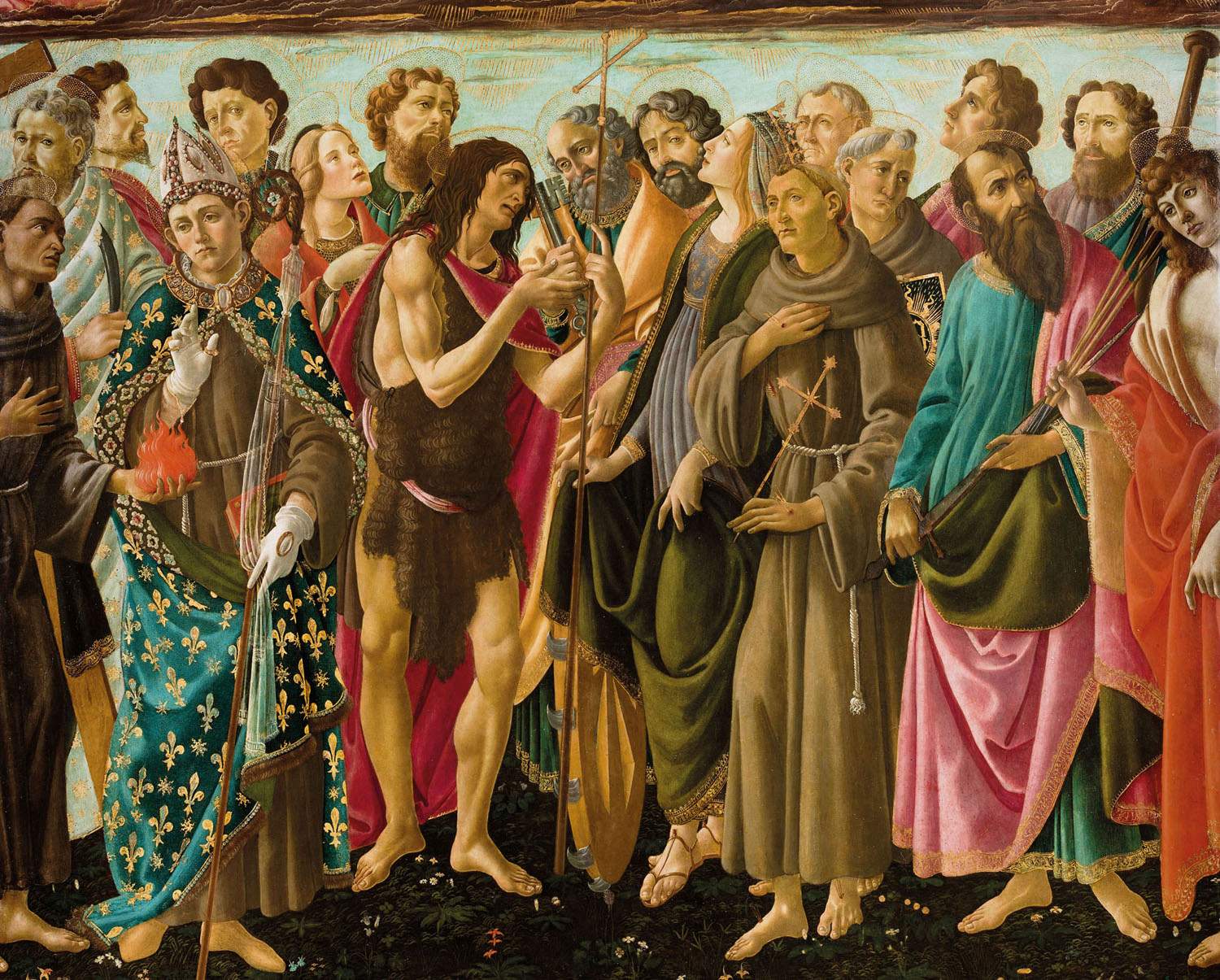Until April 28, 2019, the Palazzo del Podestà in Montevarchi (Arezzo) is hosting the exhibition Botticelli, Della Robbia, Cigoli. Montevarchi Rediscovers Its Treasures, an exhibition conceived by Luca Canonici, director of the San Lorenzo Museum of Saccra Art, and curated by Bruno Santi, Lucia Bencistà and Felicia Rotundo: for the first time, the public has the opportunity to retrace the rich art history of Montevarchi and its surroundings with a path that will lead to the discovery of masterpieces from the 15th to the 18th century. All with works from the area and commissioned mostly by the religious bodies of the Tuscan town: later removed from the places for which they were made, they are now located in various museums and have been brought together for the exhibition.
Ten works are featured in the exhibition (nine paintings and one terracotta statue), and a leading role belongs to a panel by Sandro Botticelli (Florence, 1445 - 1510), TheCoronation of the Virgin and Saints: this is a work made between 1498 and 1508 for the church of San Ludovico, divided into two levels representing heaven and earth (separated from each other by a blanket of clouds), and where we see, in the lower register, a number of saints including Ludovico of Toulouse and St. Catherine of Alexandria, and above the Virgin crowned by the Eternal Father in a blaze of angels. Botticelli executed the painting probably availing himself of workshop assistants. The work, stolen in the early 19th century, left the church of San Ludovico after the suppression of ecclesiastical orders and is now kept at Villa La Quiete in Florence. The second protagonist, on the other hand, is Jacopo Vignali (Pratovecchio, 1592 - Florence, 1664): the painting depicting Blessed Felice da Cantalice receiving the Child Jesus from the hands of the Virgin returns to Montevarchi. The canvas was made for the Convent of the Capuchin Friars of Montevarchi and left its location in the 1990s to be moved to Florence, to the Capuchin headquarters at the Montughi Convent, after the friars abandoned the Montevarchino convent.
Another important presence is the Franciscan Saints in Adoration of the Virgin by Giacomo Tais (Trent, 1685 - Pescia, 1750): this is a work made for the church of San Ludovico in 1739 and was found, precisely on the occasion of the exhibition, among the works of unknown provenance in storage at the Cenacolo di San Salvi Museum in Florence.
From the church of San Francesco Pescia, on the other hand, comes the Miracle of the Mule by Giovanni Martinelli (Montevarchi, 1600 - Florence, 1659), a little-known but very interesting seventeenth-century painter, moreover a native of Montevarchi itself. The work, executed in 1632, was also made for the church of San Lodovico. On the other hand, two other works come from the church of the Benedictine monastery of San Michele Arcangelo alla Ginestra in Montevarchi, namely the Resurrection of Christ by Ludovico Cardi known as C igoli (Cigoli di San Miniato, 1559 - Rome, 1613), signed and dated 1591, and the Nativity of the Virgin by Santi di Tito (Florence, 1536 - 1603), both now in the National Museum of Medieval and Modern Art in Arezzo.
Completing the itinerary are the Miracle of St. Anthony the Wonderworker by Mattia Bolognini (Montevarchi, 1605 - Siena, 1667), now in the collection of sacred art of the church of San Clemente di Pelago (Florence), but originally made in 1647 for the Monastery of Santa Maria del Latte, St. Faithful of Sigmaringen in Adoration of the Virgin and Child by the Capuchin painter Fra’ Felice da Sambuca (Sambuca, 1734 - Palermo, 1805), originally in the Church of the Capuchins in Montevarchi; St. Francis by the painter Violante Siries Cerroti (Florence, 1710 - 1783), painted in 1765 for thealtar of the saint in the church of San Ludovico (this and the earlier work are in the Museo Provinciale dei Cappuccini Toscani in Florence), and finally the glazed polychrome terracotta with St. Anthony Abbot attributed to Luca della Robbia il Giovane (Florence, c. 1475 - 1548), a work from the ancient Compagnia di Sant’Antonio Abate in Montevarchi.
“The exhibition, based on a research that I started and developed together with many valuable fellow travelers,” explains creator Luca Canonici, “finds its pivot in the panel with the Coronation of the Virgin and Saints by Sandro Botticelli and workshop that, after two centuries of absence, returns to the town of Montevarchi where Vasari mentions it, in the Life dedicated to Botticelli, as being present in the Church of the Convent of San Lodovico. Together with the great Florentine artist, all the other protagonists of this exhibition also help us retrace a piece of our history by bringing to the surface an extraordinary artistic heritage that has hitherto been hidden from our eyes.”
The exhibition is open in Montevarchi’s Palazzo del Podestà from Thursday to Sunday from 10 a.m. to 1 p.m. and 3 p.m. to 7 p.m. Ticket: 5 euros full, 3 euros reduced. For information, contact the culture office of the Municipality of Montevarchi by calling 055 9108230 or 0559108314, or by sending an e-mail to ufficio.cultura@comune.montevarchi.ar.it or visiting the Municipality’s website. More info on the municipality’s social spaces (Facebook, Twitter, Instagram) and on the Telegram channel under Incomune Montevarchi.
Pictured is the lower register of Sandro Botticelli’sCoronation.
Source: communiqué
 |
| Botticelli returns home after two centuries. An exhibition in Montevarchi brings back works from the area |
Warning: the translation into English of the original Italian article was created using automatic tools. We undertake to review all articles, but we do not guarantee the total absence of inaccuracies in the translation due to the program. You can find the original by clicking on the ITA button. If you find any mistake,please contact us.